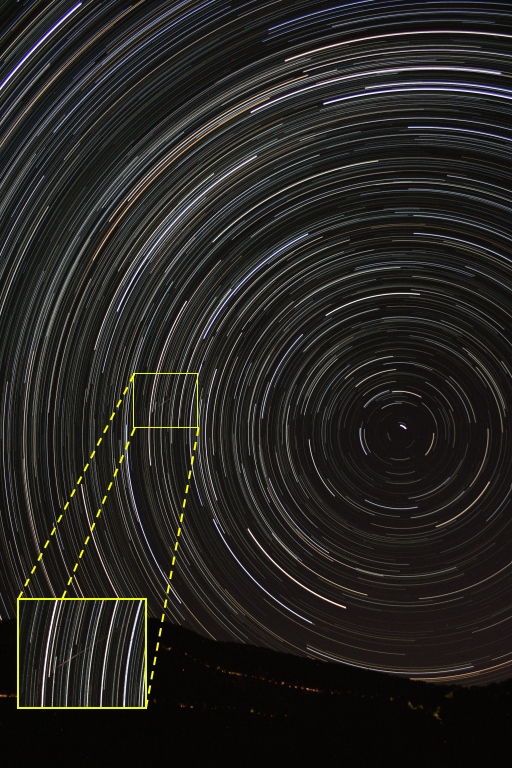
Meteor showers and comets are directly related, for it is comets which are responsible for many meteor showers that occur throughout the year.
Meteor showers represent remnants that enter the earth's atmosphere at excessively high speeds (59 km/s or 132,000 mph) when the earth crosses
the path of a comet's (previous) journey(s) into our solar system. For example, the Leonids, represent remnants of the periodic comet
Temple-Tuttel which returns to our solar system every 33.25 years and whose various return paths we cross in mid-November of each year. In
contrast, the Perseids, represent remnants of the periodic comet Swift-Tuttle which returns to our solar system every 133 years and whose
various return paths we cross in mid-August of each year. Meteor shower names, such as the Leonids and Perseids, are so named on the basis of
the constellation from which they seem to radiate (Leo and, more specifically, á-Leonis for the Leonids and just to the east of the famous
Perseus Double Cluster for the Perseids).
Note: Comet 109P/Swift-Tuttle's two last return trips to the solar system were Jul/1862 and Dec/1992 and were
responsible for dramatic activity in 1991, 1992 and 1993 where hourly rates were in the several hundreds! Generally the Perseids are the year's
best meteor shower with activity involving meteors which are both bright and quick. For an ephemeris of Comet 109P/Swift-Tuttle as well as
other data including orbital elements, click here.
Note: The Perseid meteor shower peak for 2008 was another major disappointment surrounding the year's best meteor
shower. With the exception of one bright bolide which left behind a colourful smokey trail lasting ten seconds, the evening was uneventful
with perhaps no more than five noticeable meteors observed until dawn. The photo below is characteristic of the evening and where one faint
Perseid was captured during the 2.5 hours the camera was pointing just west of the north celestial pole.
|
Comet: 109P/Swift-Tuttle Discoverer(s): Lewis Swift Horace Parnell Tuttel July 16, 1862 July 19, 1862 Constellation(s): Cas - Per - Cep Radiant RA / Dec: 03h 04m / 57° Type: Periodic Period: 133.28 years Aphelion: 51.225 AU Perihelion: 0.9595 AU |
 |
Date: Aug 12, 2008 02:42 - 05:22 UT+3 Location: Mount Kithaironas Attiki, Greece (38.1831° N, 23.2486° E) Equipment: Canon EOS 300d Canon EOS EF-S 18-55 mm @ 18 mm / f3.5 Exposures: 271 x 30 sec (RGB) 006 x 30 sec (Dark) ISO 800 JPG FINE Image Format 3072x2048 Image Size Servo Mode Software: Digital Camera Pro V2.1.1.4 Photoshop CS2 Processing: Reduction Layers & Lighten Resampling (25%) JPG Compression |